Install WordPress on AWS for free
In this article, we will explain what WordPress is, and show step by step, how to install it on your AWS account, using RebootX, available for free on Android and iOS.
In this article, we will explain what WordPress is (you can skip the first part if you already know), and show step by step, how to install it on your AWS account, using RebootX, available for free on Android and iOS.
What is WordPress ?
WordPress is a popular and versatile content management system (CMS) that enables users to create and manage websites without extensive technical expertise. Launched in 2003, it has evolved into a powerful platform, supporting a wide range of websites, from blogs and personal portfolios to business sites and e-commerce stores. WordPress offers a user-friendly interface, allowing individuals and businesses to easily publish, organize, and customize their content.
One of its key strengths lies in its extensive library of themes and plugins, which provide users with the flexibility to design and extend the functionality of their sites. Themes dictate the overall look and feel, while plugins add specific features or functionalities. WordPress also has a large and active community, fostering collaboration and support through forums and tutorials.
Moreover, its open-source nature allows developers to modify and enhance the core code, contributing to continuous improvement. As a result, WordPress has become a go-to choice for those seeking a scalable, customizable, and accessible solution for website creation and management.
How to install it with RebootX ?
First, you need to connect your AWS account to RebootX. If it's not already done, you can follow the video present in the app, in the connection flow. It's very easy and takes only a few minutes to perform.
Then, you're ready to start !
Click on the Provision a service card in the Control Panel.
 RebootX Control Panel
RebootX Control PanelFill the form like shown in the pictures below :
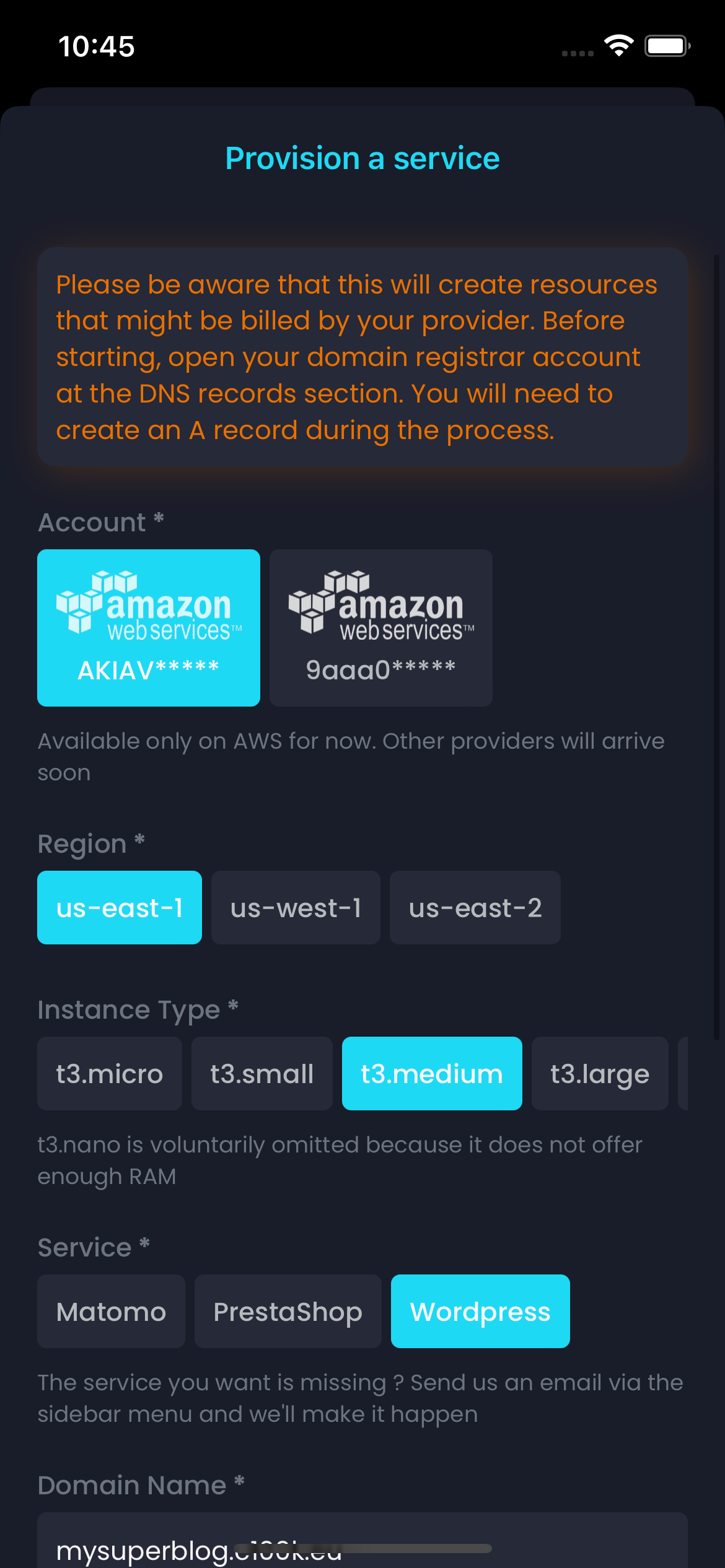 Part 1
Part 1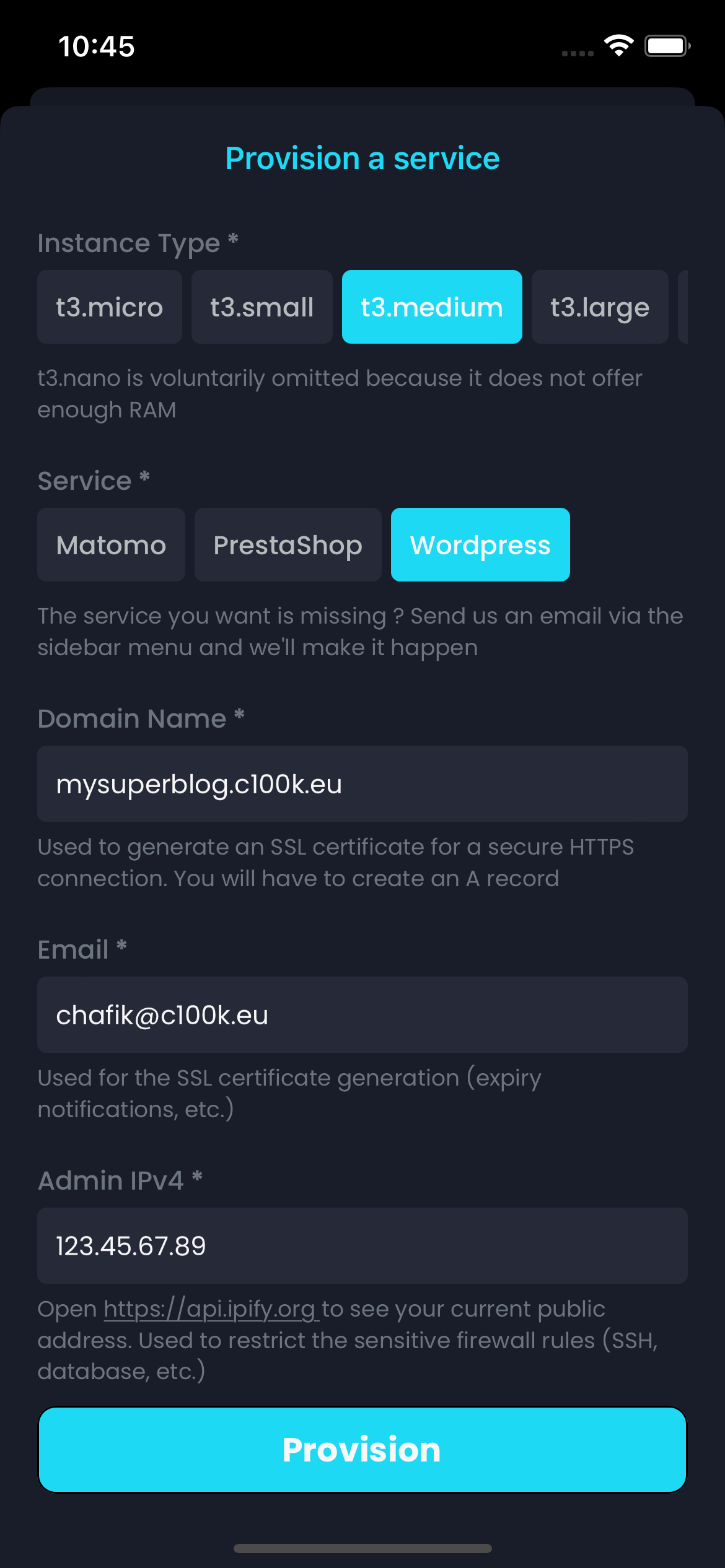 Part 2
Part 2Of course, you need to set your own values for the specific fields. For instance, you can select a different region, as well as a different instance type. If you plan to have a lot of traffic, consider bigger instances, but be aware that they cost more. For more details, check the AWS pricing page.
Regarding the Domain Name, you need to set a real value that you own. You will be asked to add a DNS record for this domain (it can be a subdomain) during the process.
For the Email, please set a valid email as well. It's used to init the Let's Encrypt flow in order to generate a valid SSL certificate.
Finally, for the Admin IPv4, set the IP address of your private place. The process will generate the required security groups for your instance. Some ports will be limited to this IP address so only you can access them (e.g. SSH, MySQL). Do not set the IP address of a public place. (By the way, we are working on an even more secure way, using a bastion).
Once that you've filled everything, you're ready to submit. Before that, open you registrar DNS zone, so you are ready to enter the required A record when you are asked to.
Press the button and let the magic happen !
 Logs 1
Logs 1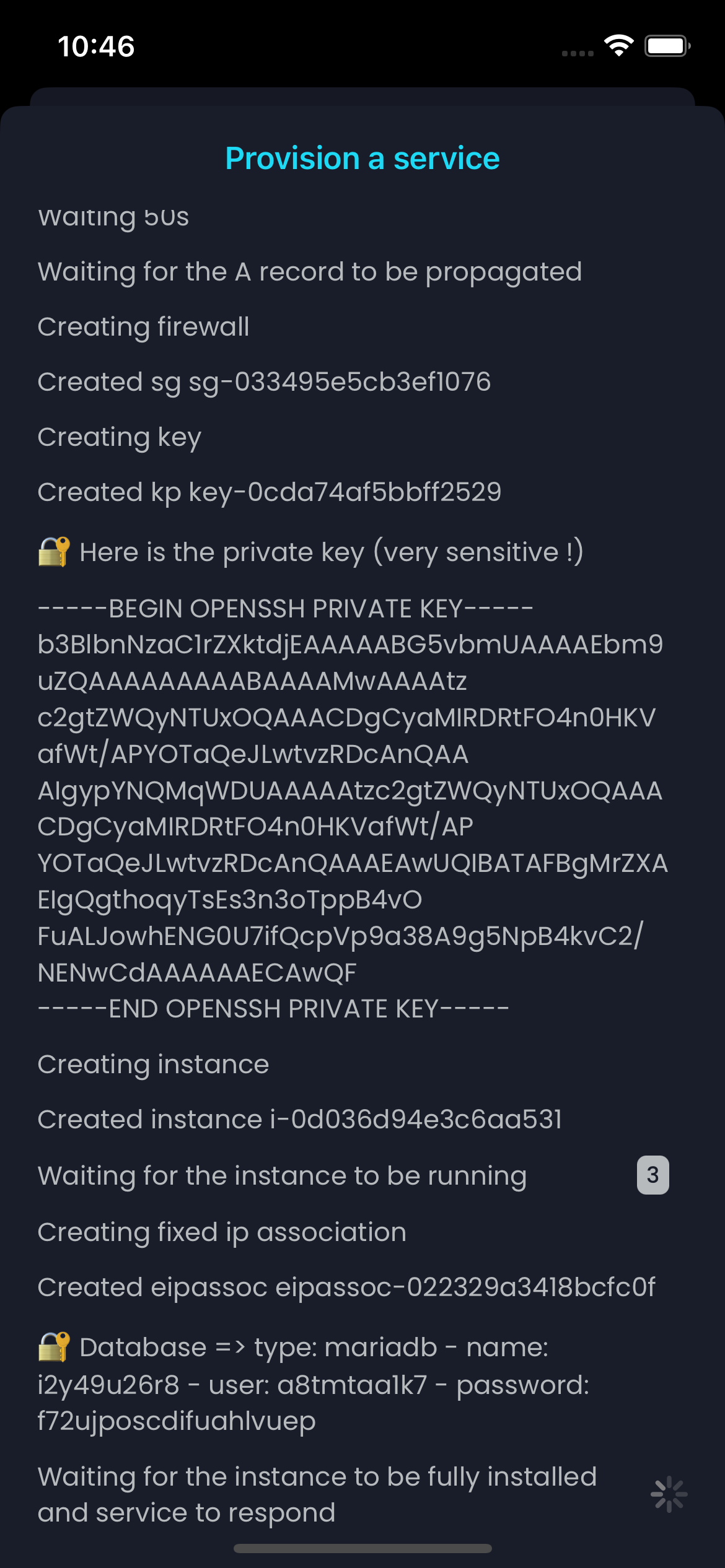 Logs 2
Logs 2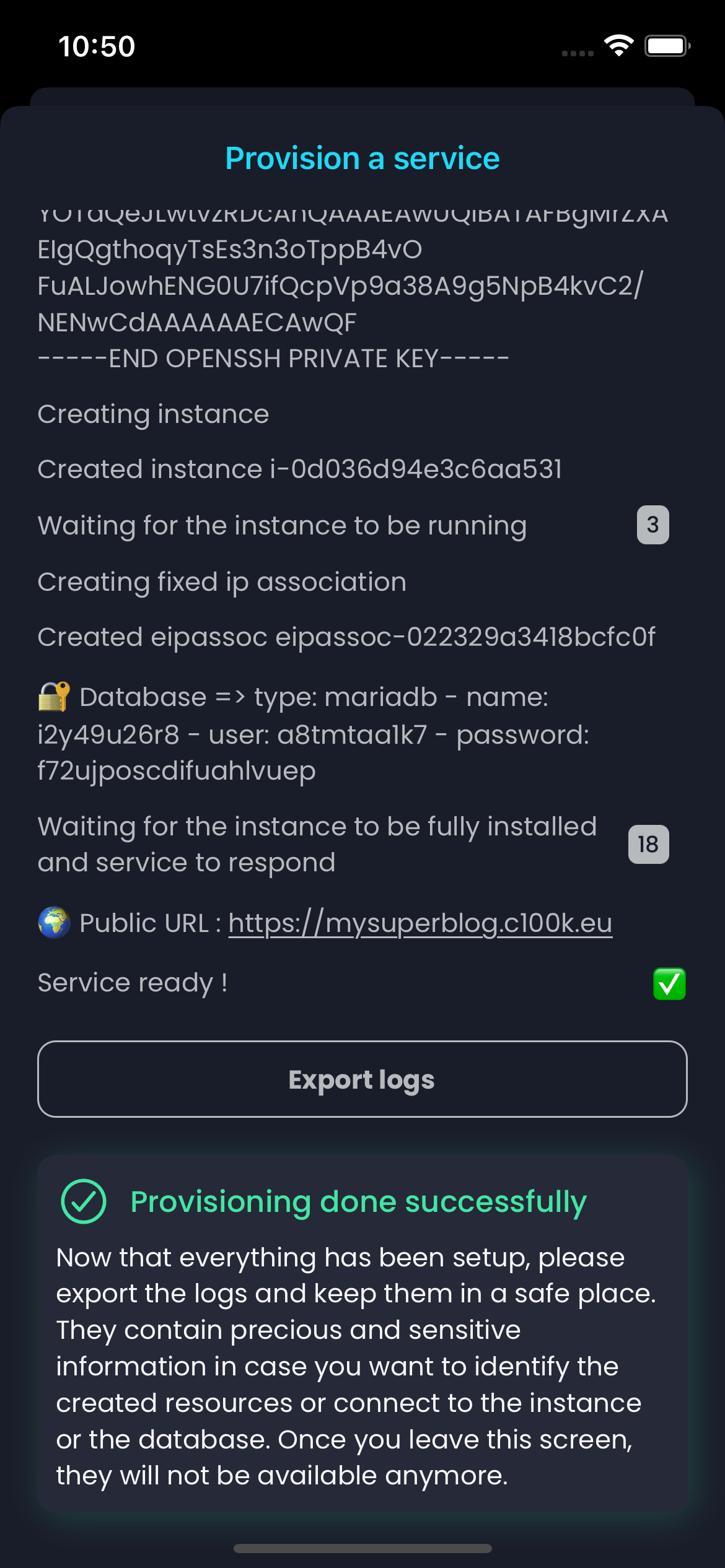 Logs 3
Logs 3If you are curious, follow the logs to understand what is happening under the hood. You can even use the generated key to SSH into the instance and follow in real time the instance setup. To do so, type the following commands in your favorite Terminal :
touch pkey.pem
chmod 0600 pkey.pem
nano pkey.pem
# Paste the contents of the key in the file, removing any trailing spaces and line breaks
ssh -i pkey.pem admin@your_domain_name.com
tail -f /var/log/cloud-init-output.log
And after a couple of minutes...
TADA 🎉 🎉 🎉 🎉 🎉 🎉 !
You can see your service running right from your browser. Select the language, fill the other details asked by WordPress, and start writing and sharing content to your customers.
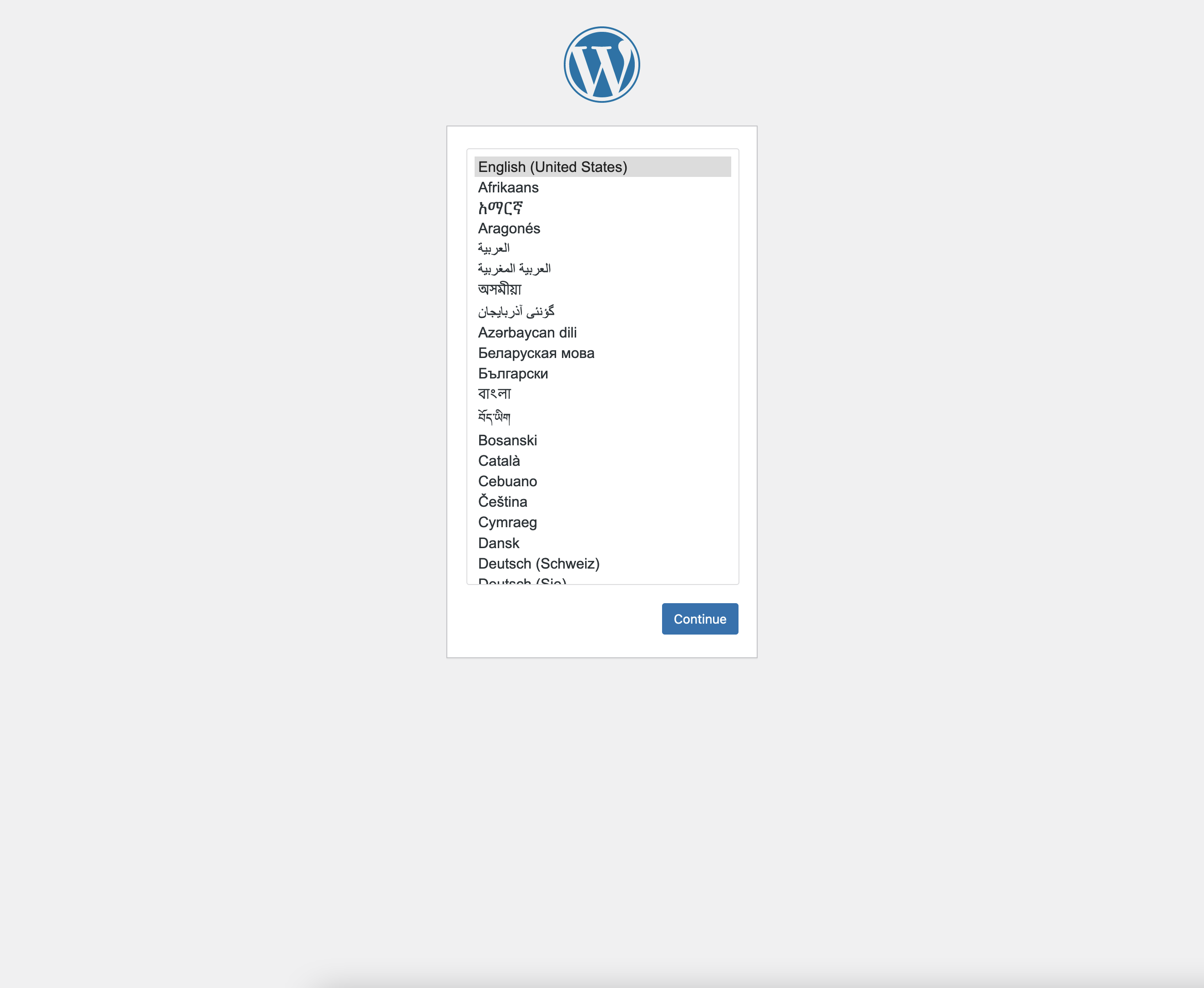 On Desktop
On Desktop On Mobile
On MobileYou can even log in to your AWS Console in order to visualize the elements created automatically for you (Key Pair, Security Group, Elastic IP, Instance).
In the next article, we'll explain how to do the same to Install Matomo on AWS .
Chafik H'nini
